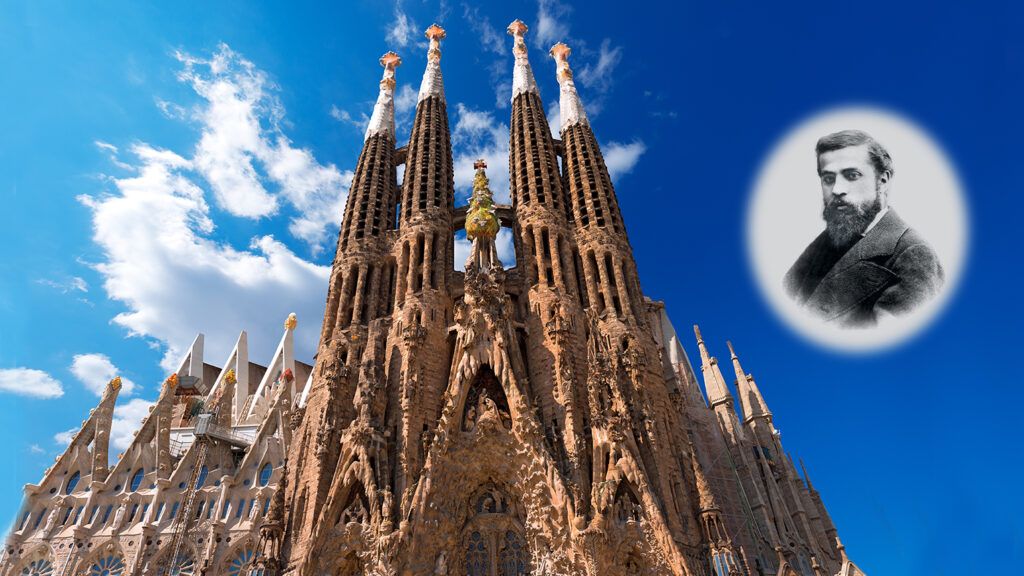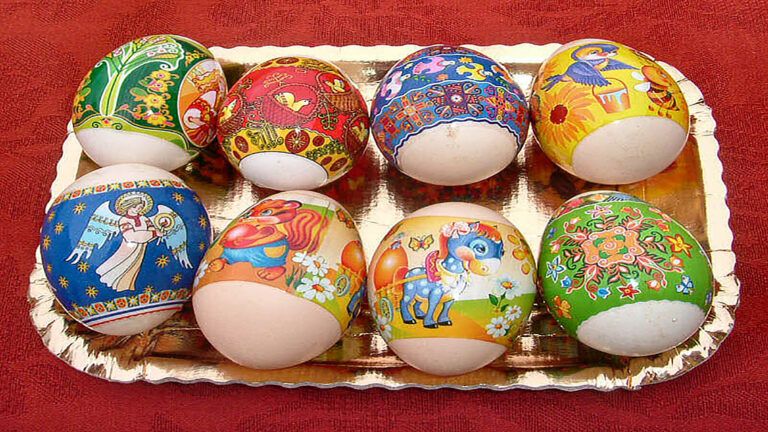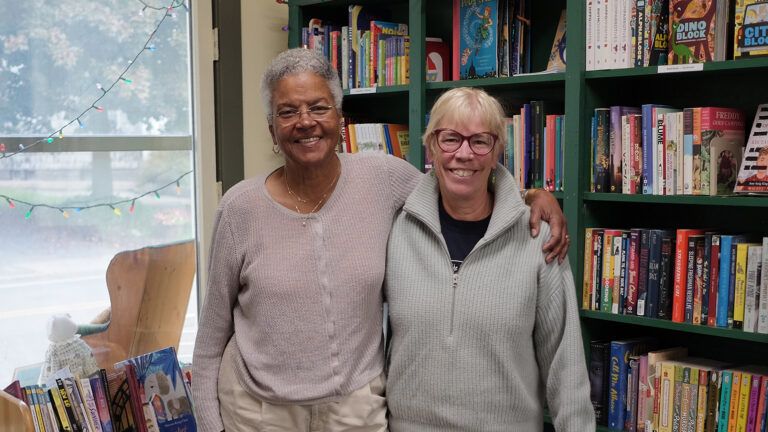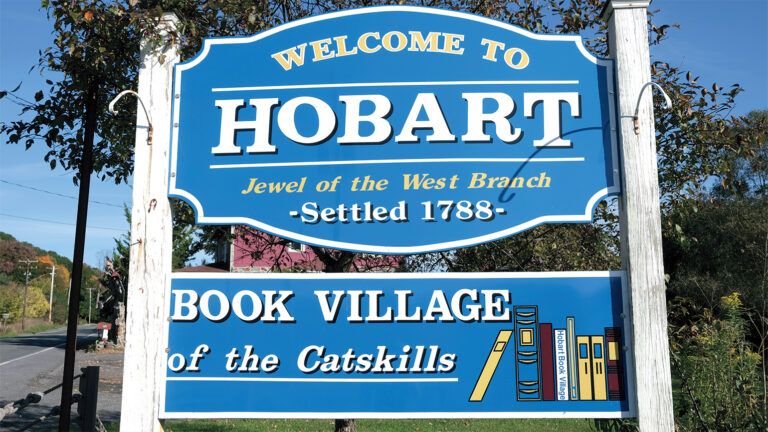It rises like a many-peaked mountain from the heart of the city. Caverns on its steep slopes hold Bible scenes. Birds, plants, frogs and insects inhabit this landscape too. It’s the Basilica de la Sagrada Familia—the Church of the Holy Family—in Barcelona, Spain. And it’s one of Europe’s biggest tourist attractions. I stood in a long line, clutching my ticket, waiting in the hot sun to be admitted. When I was inside at last, the heat and the wait were forgotten. The vast interior pulsed with light in a thousand shades. With each step, breathtaking vistas opened, immense columns branching like trees in an otherworldly forest. All of it based on the vision of an astonishing genius, Antoni Gaudí.
In downtown Barcelona on June 7, 1926, a shabbily dressed old man was struck by a tram. Passersby stopped to stare at the crumpled form. Frayed trousers, threadbare jacket, much-patched shoes, unkempt white beard—one of the city’s many beggars. “He’s alive!” someone shouted. Men picked up the unconscious tramp and carried him to the closest clinic.
His injuries were far too severe to handle there. A nurse searched his pockets for identification. In one, she found a handful of raisins and peanuts. In another, a much-thumbed copy of the Gospels. Nothing else. The injured man was taken by ambulance to the paupers’ hospital, but doctors there could do nothing either. He lay on the narrow iron bed, dying, like so many in that place, homeless and nameless.
Elsewhere in Barcelona, an increasingly urgent search was going on for one of the world’s most famous living architects. He was not in his workshop at La Sagrada Familia, where he also lived. Workers and friends were contacted; he had no family. Despite debilitating arthritis that had plagued him since childhood, the 73-year-old architect had never missed a day of work. At last, hospitals too were searched.
When inquiries finally reached the paupers’ hospital, Gaudí was still breathing but too weak to move. And so he died in a crowded ward among the city’s poorest. Which, I think, would have been fine with him. Although his work had made him a wealthy man, he’d grown up in poverty, the youngest son of a humble coppersmith near the industrial Spanish city of Reus. When Antoni’s arthritis kept him from walking, his father would carry him to the forge where he beat out the great cauldrons that hung in every Catalan kitchen. For hours little Antoni would watch the swirling shadows cast by the smith’s fire.
The family owned a small plot of land outside the city. Antoni would perch on a donkey for the hour-and-a-half walk. There, while the others dug and weeded, Antoni would watch spiders weave their incredible structures, and study the design of flowers and the spirals of snails.
In poor families, even disabled children had to earn an income. At 11, Antoni became a bellows boy in one of Reus’s cotton mills. It was hot, mind-numbing work, fanning the fire beneath a steam boiler from dawn till dark, seven days a week. Antoni’s escape was reading. Many days, he’d smuggle a book into the mill beneath his black smock and sneak a few minutes to read when the foreman wasn’t near.
One day, the owner of the factory came upon him crouched over a book. “What’s that you’re reading?” he thundered at the frightened boy. An adventure story or some forbidden adult romance, no doubt.
“It’s a book about arithmetic, sir,” Antoni said.
The answer was so unexpected that instead of firing him on the spot, as the foreman would have done, the factory owner asked further questions. In the end, he offered to help finance an education for this inquiring young mind. Which is how Antoni left the factory and achieved the impossible for a working-class boy: secondary school!
With school came holidays—the first he’d ever known. Antoni used them to explore northeast Spain, its breathtaking scenery and ancient ruins. He fell in love with the rocky needles of Montserrat, Catalonia’s holy mountain—shapes that decades later would be echoed in the spires of La Sagrada Familia. He discovered that he understood at a glance how a Roman aqueduct worked. Why a gothic arch did not fall down. He knew now that he’d been born to build things. At 18, he traveled to Barcelona to study to become a master builder.
The Barcelona of the 1870s was almost as squalid and crowded as Dickens’s London. The teenager shared a bed in an unheated room in a dismal boarding house as he attended classes at a Barcelona technical school. By the time he finished, eight years later, the name of his field had changed. Gaudí graduated not as a master builder but with a new title: architect.
His first commissions were humble: a display case for gloves, a newsstand, a lamppost. From the start, his love of nature showed in the organic shapes he gave each object. Gradually he attracted adventurous clients who allowed him to experiment with a curving facade for an office building, a spiral pattern for a roof.
As the congested old medieval city exploded outward, Gaudí’s daring style attracted clients from around Spain. He designed apartment complexes, banks, churches, mansions, convents, government buildings. He brought natural shapes into interiors too. For each project, he designed distinctive doorknobs, furniture, light fixtures. For his many public parks, the design of the benches was as important to him as the placement of the flower beds. He commanded top prices, wore hand-tailored suits, smoked expensive cigars and drove an elegant carriage with a pair of high-stepping horses.
A poor stepchild among his commissions was a church dedicated to the Holy Family. It was the brainstorm of a bookseller named Bocabella, who’d spent many years trying to raise money to get it started. When Gaudí inherited the project, all that existed was a hole in the ground. On his way to meet some wealthy client, Gaudí would halt his carriage at the forlorn site and bark instructions to the handful of laborers toiling there. Although he’d designed many religious buildings, he was a man in a hurry, with no time for churchgoing.
Which makes what happened all the stranger. What is certain is that as the years passed, Gaudí found himself neglecting high-profile commissions for a project that had no client and offered no pay. Was it the word familia in the church’s name? I wonder. The family that the architect himself no longer had? By his mid-twenties, Gaudí had lost his mother and all four of his siblings, leaving only his father, the sturdy old coppersmith, and an invalid niece, whom he cared for until her early death.
Or was it the fact that Barcelona’s elite contemptuously called this project—supported by laborers out of their meager wages and by housewives with coins scrimped from the week’s budget—the people’s cathedral? Despite the carriage and fashionable clothes, Gaudí was at his heart a working-class boy from Reus. Now that he had money, he discovered how little it meant to him. When one client refused to pay Gaudí for his sumptuous townhouse, the architect sued and won the full amount. His professional pride satisfied, Gaudí gave the entire sum to a convent.
It is certain too that he began going to church—not just on Sunday but every day—attending early Mass on his way to the construction site, immersing himself in the Gospels as he commissioned sculptures telling the story of Jesus to occupy the caverns on the huge building’s exterior. The intricate designs he’d once lavished on the dressing room for a banker’s wife were now devoted to every inch of La Sagrada Familia. Gone were the rich meals he’d enjoyed after the hungry days of youth; he assumed a spartan diet. The man who’d gloried in his pair of matched horses now poured his money into La Sagrada Familia and walked to work despite arthritis so severe that he often wrapped his legs in bandages to ease the pain. The architect who’d gone to the finest tailors and had his beard trimmed in the latest fashion lost all interest in his own appearance.
Following World War I, prices soared, including those of building materials. The humble people who’d given a weekly pittance to the church now struggled to feed their families. No longer earning money from commissions, Gaudí would sometimes stand in the street, holding out his crumpled hat to beg donations.
Not that dates and deadlines occupied him anymore. In place of the tight schedules he’d prided himself on, Gaudí saw his work now in the light of eternity. In the 1920s, while work had stopped again for lack of funds, architects from all over Spain came to Barcelona and viewed the unfinished eyesore. “How much longer will it take?” they wanted to know. “My client,” Gaudí replied, “is in no hurry.”
I don’t think Gaudí was in a hurry either as he walked from that early church service to the work site that June morning. Perhaps he was contemplating an additional angel for the east facade depicting Jesus’ birth, or another salamander for the cavern of the Last Supper. I doubt he ever heard the tram speeding toward him. Sounds from a more distant place called more urgently.
For more inspiring stories, subscribe to Guideposts magazine.





